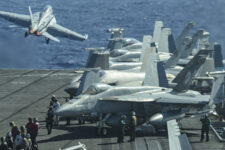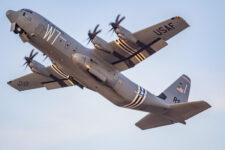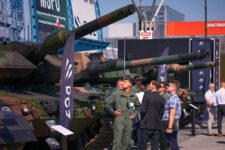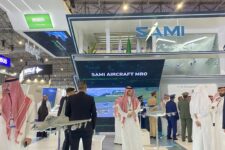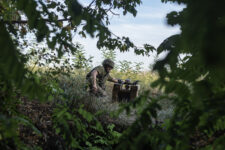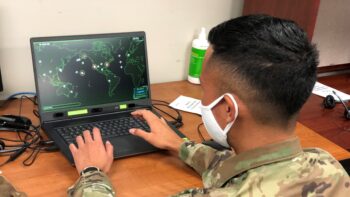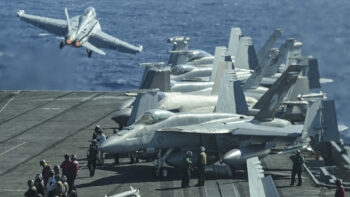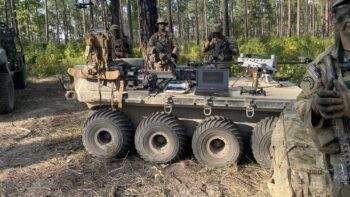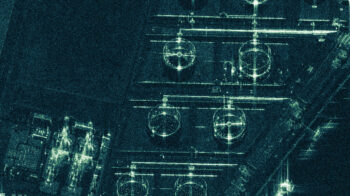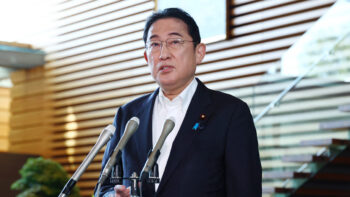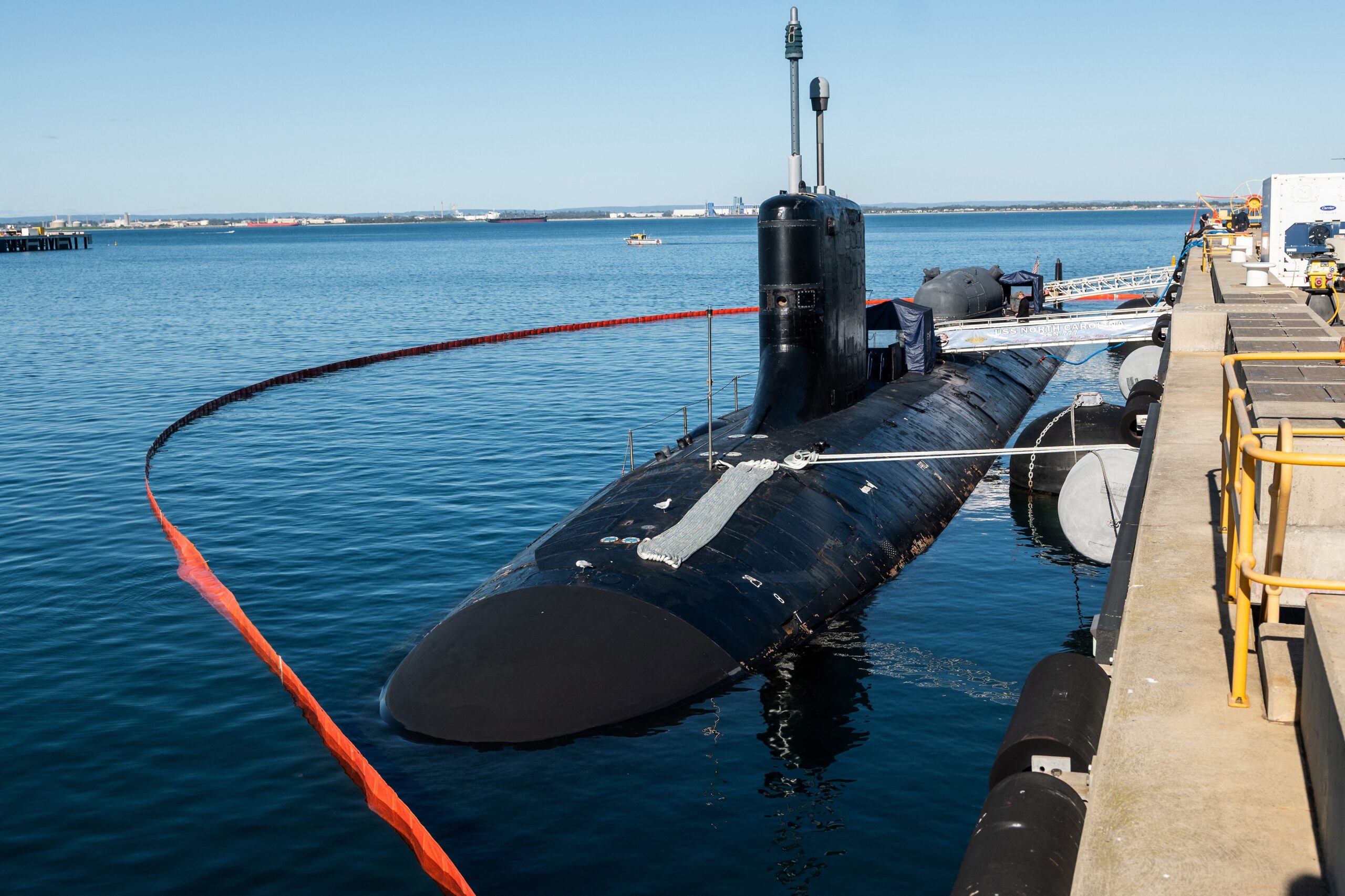
US Navy Virginia-class submarine, USS North Carolina, docks at the HMAS Stirling port in Rockingham on the outskirts of Perth on August 4, 2023. A US Navy Virginia-class submarine arrived at HMAS Stirling for a scheduled port visit as part of routine patrols in the Indo-Pacific region. (Photo by Tony McDonough / AFP) (Photo by TONY MCDONOUGH/AFP via Getty Images)
SYDNEY and WASHINGTON — Australian Defense Minister Richard Marles knows his country needs to build a large and expensive dry dock, and probably add several other large maintenance facilities to cope with an expanding surface fleet.
But just when it will begin construction, where it will be built and how much Australia will need to spend for what is likely to be a decade-long project appear to fall under what former US Defense Secretary Donald Rumsfeld called the “known unknowns.”
Asked when a decision about the dry dock project might be made, Marles did not provide a timeline, but told Breaking Defense during an exclusive Washington interview this week that, “We’re working very intensely on ensuring that there is the full capability of what we need in WA [Western Australia] to do the suite of maintenance that is required for the Virginia class submarines, both American and ours. And it’s an ongoing process.”
The Virginia and SSN AUKUS class subs will initially be based out of HMAS Stirling, the naval base near Perth, WA from which the conventionally-powered Collins-class subs operate today. But the goal is to eventually shift maintenance of its new SSNs to the town of Henderson, which is also where the Australian military’s new general general purpose frigates and amphibious landing craft fleet are being built.
EXCLUSIVE: Australian defense minister Richard Marles on AUKUS, China and industry concerns
The issue of building a large dry dock capable of servicing nuclear-powered subs, which are much larger and require much greater security than do conventional boats, was publicly raised last month at the Indian Ocean Defence and Security Conference, when Marles was asked when it would be built. He declined to answer on timeline then, and based on his comments both then and now, it appears that the scope of the decision — including deciding how many related facilities, such as a ship lift and new shipyard facilities at Henderson are needed — is impacting the speed of decision making.
Figuring out what’s needed at Henderson is the “first step” towards solving the challenge, Marles said in his interview this week.
“That’s been complicated, because it requires both the current commercial consolidation and physical consolidation. But we’re a long way down that path and really, that’s the thing that we need to [figure out] first. That then opens the door as to what that precinct will look like and what capabilities are there, but we absolutely got to make the capabilities which enable us to do this,” he said.
A source who asked not to be identified laid out some of the difficult choices Australia faces.
If Australia wants to do specific deep nuclear maintenance it needs at least one dry dock, but should have two for resilience, this source believes. The source added that having a floating dry dock big enough for a nuke boat for lower level maintenance would probably be needed, and none of that even addresses the choices that need to be made about accommodating the surface fleet at Henderson.
Marcus Hellyer, an acquisition expert with Strategic Analysis Australia, a new think tank here, said of the project, “there’s a level of complexity here that is far beyond anything defense has ever done.”
“We need to coordinate a whole bunch of decisions across the surface fleet, the subsurface fleet, the nuclear subsurface fleet and conventional subsurface fleet, across construction, across deep maintenance, across everyday maintenance– all of these different pieces,” Hellyer told Breaking Defense. “And guess what? They’re all in competition.”
Australia has been eager, Hellyer said, to demonstrate something is getting done. The Lucky Country has committed $4.6 billion AUD ($3 billion USD) to the UK to help build and design the SSN AUKUS fleet’s nuclear reactors and to design the subs. That came after Australia made the unprecedented decision to make a $3 billion investment in the US over the next five years for long-lead items and to help fund the expansion of American shipyards that will build and retrofit Australia-bound Virginia-class nuclear-powered attack subs.
Much of the public discussion about the AUKUS challenges has been cast by the government in positive terms — it’s going to be really hard, but Australians have done the near impossible before. But that doesn’t build dry docks or the extra housing needed or the much more secure facilities needed to protect nuclear secrets in Australia. For his part, Hellyer thinks the challenges, including sorting out the dry dock issue, need to be taken seriously.
“So, all this crap about, if we just say ‘Aussie, Aussie, Aussie!’ and, you know, remember the Harbour Bridge and the Sydney Opera House and the Snowy Mountain scheme and the spirit of Anzac, I mean, that’s just nonsense,” Hellyer said. “These things are in competition for a finite amount of resources. And the bottom line is, there simply are not enough resources. Even if you had all the money in the world, which they seem to do, there’s just not enough people, space, industrial capacity, head space in defense and the government to process all of these things.”
